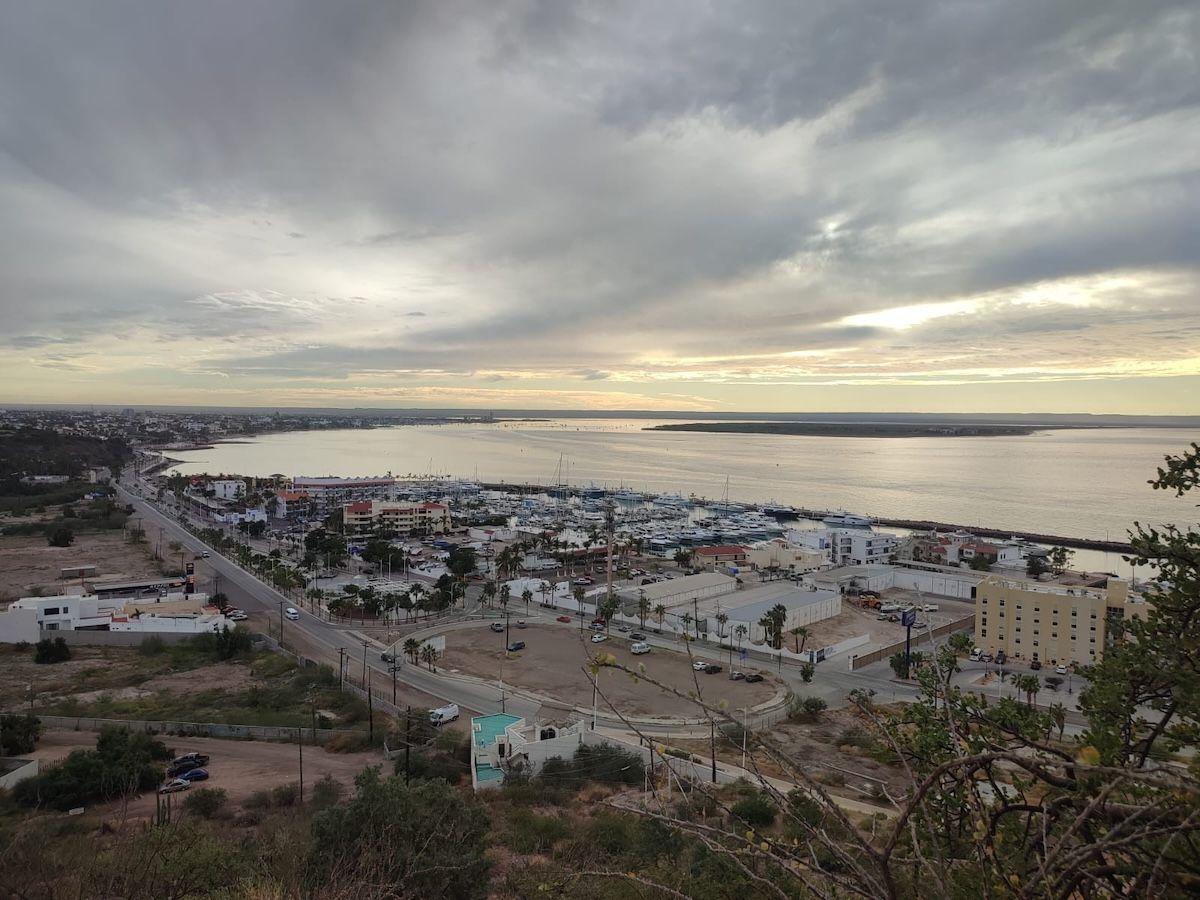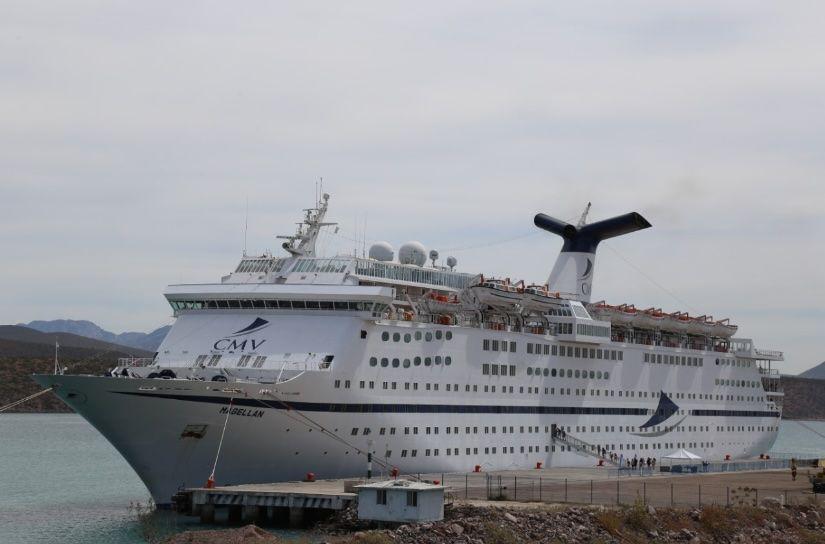The cruise industry has incorporated scrubbers to reduce the levels of pollution they emit to the atmosphere, the challenge of avoiding damage to the environment has now been transferred to the sea in the face of the discharges of washing water from these vessels. In La Paz, Baja California Sur, is one of the epicenters of marine tourism in Mexico, experts and industry representatives discuss the measures and consequences that the arrival of this type of vessel causes.
“The global concern to reduce air pollution produced by ships has become marine pollution. The regulation was intended to reduce gas emissions as a result of the combustion carried out by boats. In order to achieve this and not have to pay for lower sulfur (and more expensive) fuel, they were given the chance to install gas scrubber systems to reduce emissions. But now you have this other problem that those who use open systems are polluting the marine environment, so instead of polluting the atmosphere, you are now impacting the marine environment as well,” said Sarahi Gómez, research coordinator for the northwestern office of the Mexican Center for Environmental Law (Cemda).
The on-board scrubbers have the function of removing sulfur. The process results in acidic washing waters that are toxic to marine species and that acidify the oceans, according to information from the Institute of the Americas, which indicates that of the 3,628 ships with scrubbers at the end of 2020, 34% were cruise ships.
Cruises on BCS this 2024

Illustrative photo of La Paz Bay, Baja California Sur. Source: Daniela Reyes
“A cruise on the Gulf of California will bring you closer to numerous cities such as La Paz, Cabo San Lucas, Loreto or San José del Cabo. If you dare to explore our Baja California Sur cruises, you can discover why this region is one of the most precious destinations in North America,” a travel agency offers from 7,000 to 100,000 pesos departing from Los Angeles or San Diego.
Baja California Sur expects to receive around 220 cruise ships like these during 2024, Arturo Musi Ganem, president of the Mexican Cruise Association, said in an interview.
16 will arrive at the port of Pichilingue in La Paz and although there are fewer cruise ships than in previous years, Musi Ganem rejects that this is a negative indicator, since La Paz will be receiving larger vessels with an average of two thousand passengers per cruise ship.
The cruise ships that arrive in La Paz regularly come from Cabo San Lucas, whose origin is Los Angeles or San Diego.
In La Paz they stop for approximately 10 hours and then head to Mazatlán or Puerto Vallarta and return to their place of origin.
The problem of the presence of cruise ships in La Paz, from the point of view of Sarahi Gómez de Cemda, has to do with those that have purifiers with an open system and that, therefore, release washing water into the oceans.
Musi Ganem ensures that cruise ships meet all the requirements required by the International Maritime Organization (IMO) and that they are under very strict supervision to prevent any spillage of wastewater or oily water. However, he didn't know how many of the cruise ships had open and closed systems because it was a very technical issue, but he said that those who have open systems discharge into international waters along the way.
“In the ports for now here in the Mexican Pacific, they don't have waste in any of them, nor do they wash chimneys, nor do they dump. These are done in accordance with the IMO, which authorizes it during international waters and during the journey, and only as far as they allow. So, if ships do this type of washing to lower sulfur, but they do it in international waters or in places where they receive such discharges,” he clarified.
For Musi Ganem, the study's estimates “were an assumption and are not true” because there is no proof of what he asserts. “They thought that the ships were parked there for months (in the pandemic), which is not true. But in the end, they already had a line of saying; there was interest in saying that they polluted”.
What all sectors agree on is that the discharges take place at sea. The report of the International Council for Clean Transport (ICCT) in 2020 determined that 85% of the total scrubbers installed in the maritime fleet are open circuit because their cost is lower and 14% have a hybrid system.
This means that almost 9 out of 10 vessels with this technology “use seawater to 'clean' or neutralize sulfur oxides from exhaust gases and dump the resulting wash water into the ocean, more or less continuously, while the ship consumes energy (even in the port and at the pier),” the study points out.
But these waters should not only be discharged, if not treated beforehand, for this reason cruise ships must incorporate technology, reach a certain level where they are suitable for discharging into international waters only, said Sarahi Gómez.
“The free discharge of wastewater is not allowed and what the law says is that it gives you two ways to manage your wastewater: you ask for permission to discharge it to the sea but first and for that Conagua has to authorize it. The other way is this because, since the regulation says that ports must have the infrastructure to receive the waste, well, then another option is to unload it at the port in the facilities that are authorized to do so. But this criterion that the download cannot be allowed also applies to open systems, these should also be treated before downloading them,” Sarahi Gómez explained.
Gómez accused that this prior treatment does not exist in open systems and what they do is to pour recurrently, either outside the territorial sea where Mexican regulation does not apply or within the country without notice.
“Vessels have open treatment systems, which are the ones that when they enter Mexican seas are discharging washing water without having a permit to dispose of it and then they should have prior treatment and that obviously doesn't happen because they don't have a treatment plant on top of the boats to do so. So it's discharging all the time,” Sarahi explained.
However, experts have highlighted that today a cruise ship would not need a permit to carry out this type of discharge in Mexican waters, a legal work that Cemda is working on to make wastewater regulations applicable to these discharges as well.
For its part, Musi Ganem ensures that those who have open systems treat their waters on board and have incinerators to discharge as little as possible to the sea.
Regarding the possibility that wastewater treatment plants with closed systems can discharge this washed water at ports, Musi Ganem points out that currently the ports of Baja California Sur do not have infrastructure to treat the washing water from the treatment plants and there is no company in the entity that provides this service, so they store their washing water until it reaches a port where there is infrastructure to treat it.
“There is a company that is providing service to cruise ships that has all the international and national authorizations for water treatment called Maritimeps. It has service in Puerto Vallarta, Ensenada, Mazatlán, those are the ports where they do provide this service. And also in Los Angeles and San Diego,” Musi Ganem explained.
These companies send trucks to ports to receive wastewater and take it to be treated and then reused, according to Alejandro Trillo, CEO of Maritime Procurement Services (Maritimeps), however, this would apply only to 1% of the maritime fleet that uses closed system treatment plants, according to the report of the International Council for Clean Transport (ICCT).
“I have a plant in Guadalajara. The ships that pass through Los Cabos, La Paz, Mazatlán and Vallarta are the same route. So we caught them all in Vallarta because it doesn't make sense to have infrastructure in different places and because there's a more developed industry in Guadalajara and there's more market there. And the other option the ship has is to unload in California,” Trillo explained.
Measures to mitigate impacts
Cemda carried out an analysis of the regulatory framework for washing water and found that they are not defined in any law, but they found the figure of wastewater in the National Water Act, which would apply: “These are those waters that have been used for different processes and that are derived from the process for which they are used, since their original composition is altered and results in water that is not suitable for the function it had in its natural state”.
So now they have dedicated themselves to getting the authorities to recognize washing water as wastewater, then as a second step they will identify the responsible authorities.
“There are several instances that have to do with wastewater discharges into the sea. First, Conagua is the one who authorizes discharges into national bodies of marine waters. Another important actor is Profepa, which is responsible for monitoring and inspecting regulatory compliance. And we have another actor who is the Port Authority, because the Port Law specifies that ports must have facilities to receive and properly dispose of wastewater, and if washing water is recognized as wastewater, this regulation applies to them,” said Sarahi Gómez.
They are also working to establish in Mexican laws a criterion of non-transference so that “the solution you propose does not become part of the problem”.
Due to the impacts of washing water on the ecosystem, there are 45 countries that have measures to regulate the use of wastewater, and in some ports their use is even banned or restricted, according to Bryan Comer, director of the marine program at the International Council on Clean Transportation.
“In the state of California, the use of wastewater treatment plants is not allowed within 24 kilometers of the coast of the entire state, but in Mexico there are no restrictions. In the United States and Canada they have an emission control area and scrubbers are a form of emission. If Mexico were to establish an emission control area it would be very important to regulate scrubbers. Mexico could do that within its national waters or even at the port level they could require that treatment plants not be used. It's something they should consider,” he recommended.



Comentarios (0)